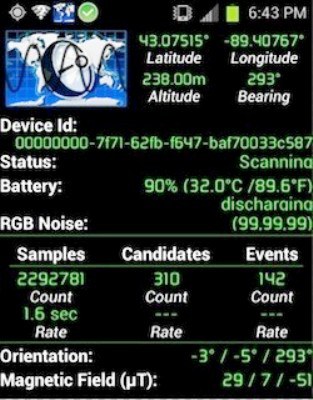You really do not need to astrophysics degrees or expensive equipment to monitor and analyze the ground invade rays. Every smartphone can become a cosmic ray detector, need to do a few steps.
All you need - a piece of duct tape and some free gadgets.
"Our initiative is to encourage students and the public to gather data and try to understand their surrounding particles - things that are kept near, but they usually do not have the possibility to see - a written report says one of the apps developer, a physics professor at the University of Wisconsin Justin VANDENBROUCKE - the program works on the same principle as a grand experiment, conducted in scientific laboratories.
Scientists themselves have a rather vague understanding of cosmic rays, which, in their view, black holes and supernova emitted by high-energy subatomic particles found Live Science. By studying these "elusive" particles, scientists hope to learn more about dark matter - and you can help them!

To contribute, or perhaps explore the cosmic radiation for fun, you should implement a few simple steps:
You need to install data storage gadget and electronic cosmic ray observatory (DECO), which you can download here. Currently, this can only be done on Android devices users, but Mr VANDENBROUCKE and his team developed and adapted to the iOS gadget;
Sealed with a phone camera lens with adhesive tape;
Help your phone anywhere, but the top half of the screen.
The gadget works great and easy to detect muons (elementary, with a negative electrical charge, the particles). This creates secondary particles, cosmic rays reaching the Earth's atmosphere.
How does it work?
Muon strikes the silicon, the bottom of the camera phone, an electric charge is formed, which creates a pixel signature. DECO captures these images every few seconds and transmit the information in a central database.



